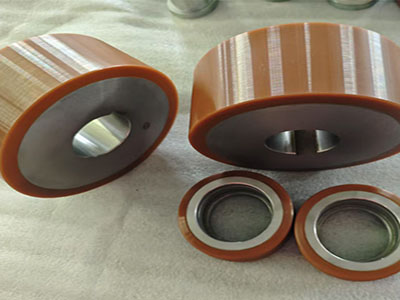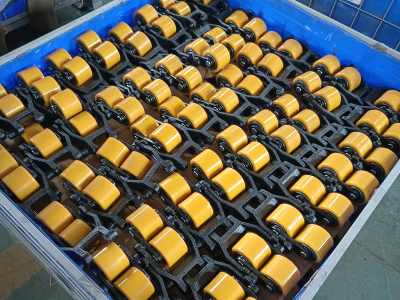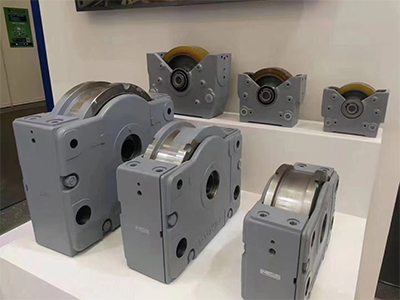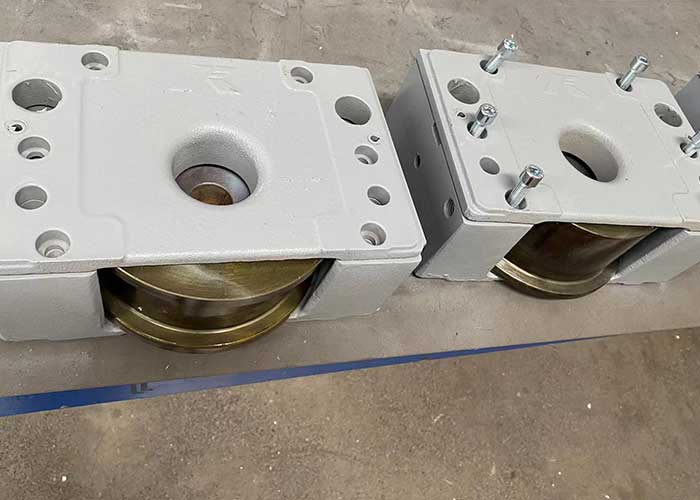Forklift Trucks Drive and Running Wheels
The forklift trucks drive and running wheels are important components that ensure efficient material movement and load handling. Their structural features, such as material composition, diameter, tread design, and shock absorption, can be tailored to the specific requirements of the forklift's operating environment. Whether used indoors for light tasks or outdoors in harsh conditions, travel wheels provide the necessary support, stability, and traction to maintain smooth and safe operation. We will explore the application and structural characteristics of travel wheels in forklifts and their importance in the overall function of the forklift.
Application of drive and travel wheels in forklifts
Application of drive wheels
Drive wheels are essential to the mobility of forklifts, allowing forklifts to efficiently traverse different terrains, whether inside a warehouse or outdoors in the yard. These wheels are responsible for carrying the weight of the forklift and providing the necessary traction for forward and reverse movement.
Application of travel wheels
Indoor and Outdoor Use: Forklifts are versatile machines designed for both indoor and outdoor applications. In indoor environments, forklifts travel on smooth, level floors, while outdoor operations may involve uneven, rough surfaces. The wheels are engineered to perform optimally in both environments, providing a stable ride regardless of the terrain.
Drive and travel wheels help to evenly distribute the weight of the forklift, preventing undue stress on any particular part of the vehicle. This ensures better stability when the forklift is lifting and transporting heavy loads, reducing the risk of tipping or uneven wear.

Structural features of forklift wheels
The structural features of the wheels are designed to ensure strength, durability, and optimal performance in a variety of operating conditions. Here are some key design considerations:
Material composition: Wheels are typically made of durable materials such as polyurethane, rubber, or steel. Polyurethane wheels are often used because they offer excellent wear resistance, high load-carrying capacity, and good shock absorption. Rubber wheels are generally suitable for softer surfaces, while steel wheels are ideal for rough industrial environments where durability is a primary consideration.
Wheel diameter and width: The diameter and width of the wheel depend on the specific requirements of the forklift and the loads it carries. Larger diameter wheels offer better traction and can handle heavier loads, making them ideal for heavy-duty forklifts. Wider wheels help distribute weight more evenly, prevent undue stress on any one wheel, and ensure better stability during movement.
Tread design: The tread design of the wheel is important to provide traction and reduce slippage. Forklift wheels may have a smooth or textured surface, depending on their application. Textured treads help improve grip on rough or uneven surfaces, while smooth wheels are used in environments where the ground is flat and even. The choice of tread design affects the efficiency of the forklift to move and handle loads.
Shock absorption: The travel wheels must be able to absorb shock and vibration generated during movement, especially when traveling on rough or uneven surfaces. High-quality wheels with good shock absorption characteristics help to operate more smoothly, reduce wear on forklift components, and improve operator comfort.
Wheel bearings: High-performance wheel bearings are an integral part of the smooth operation of the travel wheels. The bearings reduce friction and allow the wheels to rotate efficiently, thereby improving maneuverability and reducing energy consumption. A well-maintained bearing system also ensures the life of the wheel and reduces the need for frequent maintenance.

By selecting the right type of travel wheels based on the forklift's application and environment, operators can significantly improve the performance of their forklift, reduce downtime, and increase overall productivity. Understanding the role and design of travel wheels is essential to keeping your forklift in optimal operating condition.



